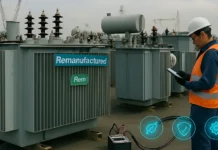Researchers have gone ahead and developed a method repurposing agricultural and industrial waste into low-cost, durable bricks and tiles, which, by the way, outperform traditional materials, thereby decreasing both production costs and carbon emissions, while at the same time also diverting waste from the landfills.
The study, which has been published in Scientific Reports, goes on to address certain critical challenges that lie within the construction sector, like high material costs and also degradation of the environment. Through incorporating materials such as sugarcane bagasse ash, rice husk ash, wheat straw, marble powder, and sawdust, along with plastic waste, the research goes on to showcase prominent enhancements when it comes to strength, durability, and cost-efficiency as compared to the conventional bricks as well as tiles.
Environmental Impact of Cement – How to Tackle It
Cement-based materials such as bricks and tuff tiles happen to be foundational to the development of infrastructure. But cement production is indeed energy-intensive and also contributes quite majorly to the global greenhouse gas emissions. Improper disposal when it comes to industrial and agricultural waste further goes on to compound the environmental concerns.
In order to lessen such impacts, researchers are also turning towards supplementary materials that reduce the usage of cement while, at the same time, improving the performance as far as construction materials is concerned, which, by the way, is a trend seen across the world.
There are studies from the past that have explored numerous industrial byproducts, such as the likes of textile fibers, sewage sludge, glass powder, and eggshell waste, in order to enhance properties that range from compressive strength and thermal insulation to even water resistance. Still, there is comprehensive research combining many kinds of locally available waste within the construction that has been limited.
Turning Waste into Building Materials
It is well to be noted that the research team went on to identify certain nine kinds of waste that are based on local availability and also have the potential to substitute cement or clay. These included marble powder, sugarcane bagasse, rice husk, glass powder, sawdust, and wheat straw, as well as plastic waste.
They went on to fabricate 52 samples, of which 31 were of tuff tiles and 21 of bricks, through partially replacing the cement or clay with selected materials hovering at 5%, 10%, and 15% by mass. Tuff tiles were produced by making use of a cement-sand-aggregate mix along with a water-to-binder ratio of 0.36, whereas the bricks were made from clay that’s blended with waste additives.
Apparently, both solid and ash forms of organic materials such as rice husk and also sugarcane bagasse got tested to evaluate the performance differences.
To assess the materials, the team went ahead and conducted a sieve analysis for particle size distribution, took certain density measurements along with compressive strength tests and also water absorption evaluation and X-ray diffraction (XRD) so as to identify the material phase.
Notably, statistical analysis, which used one-way ANOVA – p < 0.05 went on to confirm quite a significant difference when it comes to compressive strength as well as water absorption across material types and also replacement levels.
Prominent Findings: Performance as well as Material Properties
Sieve analysis went on to show that fine particles of <0.075 mm made up only 4–8% of the sand, therefore indicating a very well-graded mix that is suitable when it comes to structural applications. The density of finished bricks and tuff tiles fell in a range of 1.5 and 2.0 g/cm3. Besides, samples that had the sugarcane bagasse solids happened to be much lighter in terms of weight without compromising on the structural integrity.
Interestingly, the X-ray diffraction (XRD) analysis went on to confirm the presence of major crystalline phases such as calcite – CaCO3, portlandite – Ca (OH)2 and also quartz – SiO2, all of which contribute to a much-enhanced mechanical strength and, along with it, overall durability. Water absorption tests went on to reveal a robust moisture resistance, with tuff tiles having rice husk solids showing as little as 1% absorption. Bricks that were made with rice husk ash reached almost 10%, therefore indicating an elevated long-term performance.
Also, the compressive strength outcomes were equally quite promising – tuff tiles having 5% sugarcane bagasse ash went on to attain a peak strength of 32 MPa, whereas bricks with a similar additive reached 11 MPa, which is well within the range when it comes to load-bearing use.
Cost analysis highlighted the economic advantages of this approach. For example, bricks that are made up of 10% marble powder went on to be 14% less expensive as compared to the standard options, and tuff tiles having 10% sugarcane bagasse ash were 4% cheaper. These findings underscore the financial and also environmental value of incorporating waste materials within the sustainable building products.
Practicality – Transforming Waste into Building Solutions
Integrating agricultural along with industrial waste into bricks and also tuff tiles goes on to present a practical and also a sustainable option in terms of modern construction. These waste-enhanced materials provide much better lower water absorption and durability, and along with it, reduced production expenditures, therefore making them viable in terms of residential, commercial, and also public infrastructure works.
Tuff tiles, which are most commonly used in outdoor flooring, happened to benefit quite significantly from the addition of optimized waste. In a similar way, bricks that are enhanced with byproducts offered strong thermal and also structural performance, thereby supporting building practices that are energy-efficient.
This approach also syncs perfectly with the United Nations Sustainable Development Goals – SDGs – especially –
- Goal 9 – which is Industry, Innovation, and also overall Infrastructure
- Goal 11 – Sustainable Cities and Communities
- Goal 12 –Consumption and Production Responsibly
Through promoting a circular economy model, this research goes on to support a much smarter, sustainable usage of natural and also industrial resources.
In the End
This study happens to offer quite a practical step toward much more sustainable construction materials with repurposing agricultural and industrial waste into bricks and tiles as one of the options. Through testing a range of waste-based additives, research furnishes a much more workable approach, therefore turning eco-friendly bricks as well as tiles stronger and much more cost-effective.
Going ahead, the next steps have in them streamlining manufacturing methods, scaling up production, and also running long-term field tests in order to see how this kind of material performs when we talk of the real-world conditions. The authors also happen to point out that the differences when it comes to waste material quality could very well affect the consistency, which also makes reliable supply chains and also quality control significantly important.
Working closely along with industry and along with it the policymakers could enable a rapid adoption of these materials. In totality, the research certainly goes on to show how locally available waste can get turned into high-performing building products, thereby offering a repeatable model so as to build a more sustainable infrastructure.
































